Essential places
1. Itzurun-Algorri: the Geopark’s geological shrine
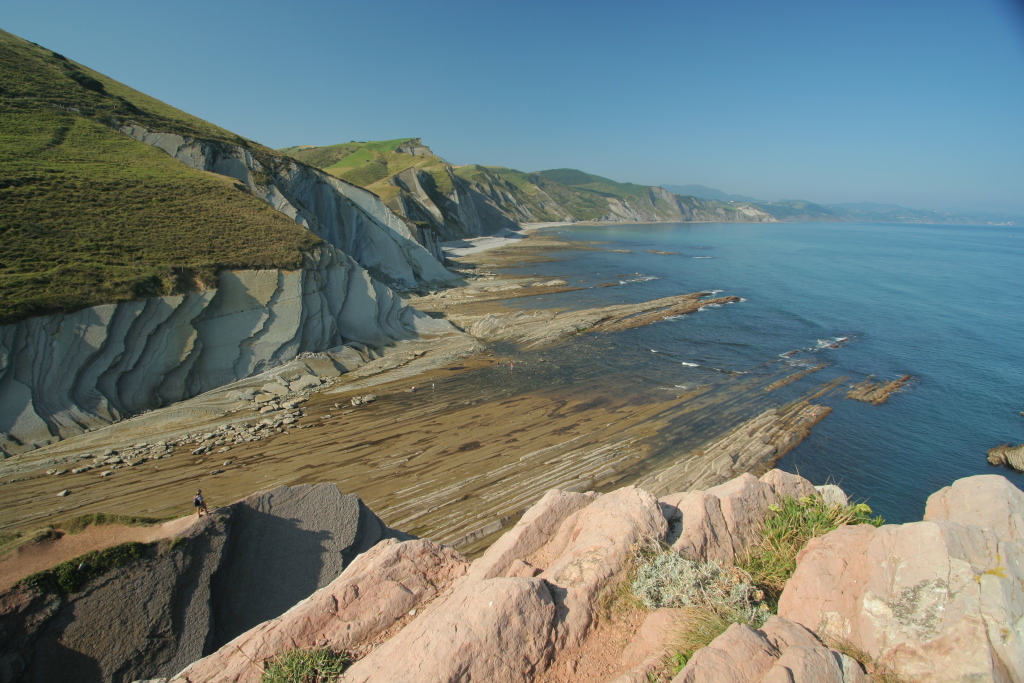
The flysch deposits acquire their greatest relevance on the Itzurun beach in Zumaia. The verticalized layers of this spectacular geological phenomenon help to understand the extinction of dinosaurs, and even today, many geologists from across the world seek answers to the behaviour of our planet in this huge book of nature. Would you like to get to know it? You can do the Algorri Georoute, go to the visitors’ centre and enjoy one of the schedules geological boat trips, but above all, make sure not to miss a good sunset from the beach.
2. Elorriaga: soaring cliffs and dream-like open spaces
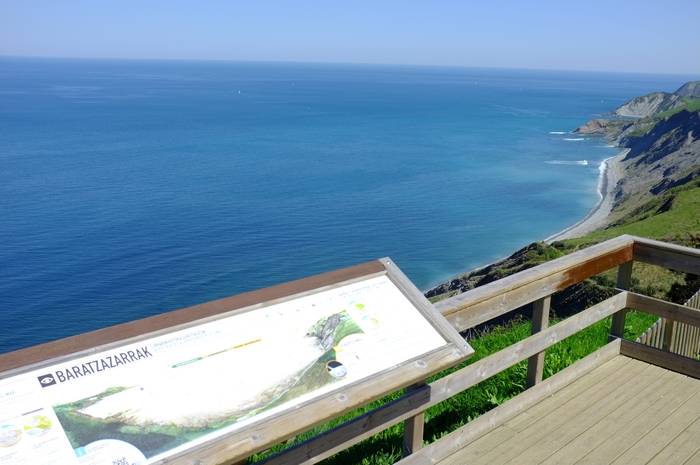
Visiting Elorriaga is about visiting many things that will leave behind some lovely memories. It is a small district with a rural tradition where the local Txakoli Basque sine is produced. Inland, we will be able to enjoy broad views of the limestone mountains of Andutz or Itzarraitz, located on the southernmost edge of the Geopark. Don’t miss a visit to the Baratzazarrak viewpoint, a spectacular wooden platform that leans out over the most important flysch cliffs, and from where we can make out a good part of the Bay of Biscay.
3. Sakoneta: an impressive geology museum
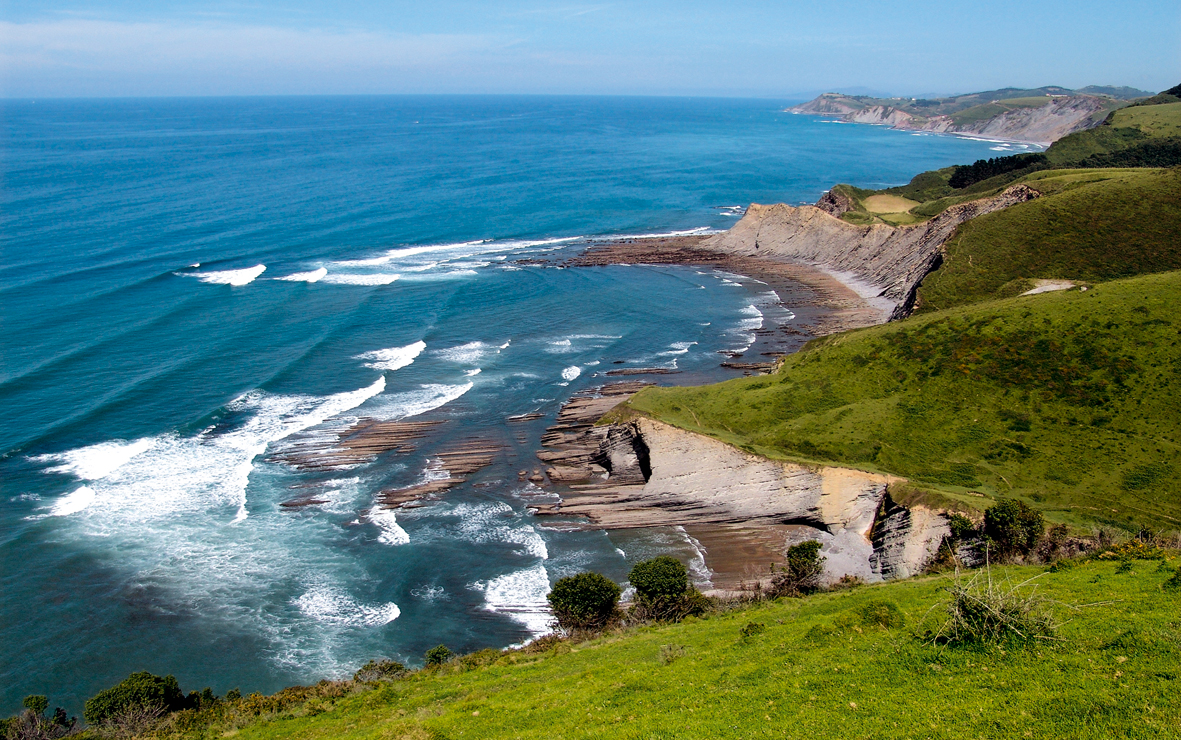
Sakoneta is right at the heart of the Deba-Zumaia Protected Natural Landscape. And it is obvious. It is an environment where the forces of nature play a leading role, where the cliffs proudly emerge and where the tidal plain is bigger than anywhere else. It is an area of surfers and daring ramblers. It is a good idea to do the Sakoneta georoute or go on one of the scheduled guided excursions to see the biodiversity of the tidal plain. But if time is in short supply, make sure you visit the fantastic Mendatagaina viewing platform.
4. Saturraran: the hidden beach of the black flysch
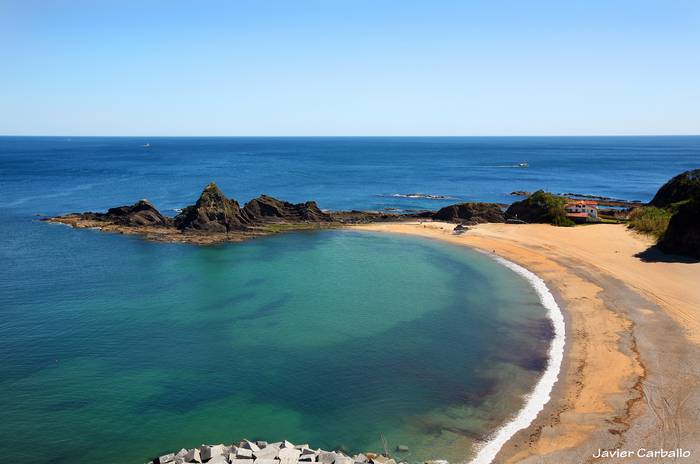
Saturraran is a different beach, a sandy spot shaped like a half moon facing west and protected from the ferocity of the Bay of Biscay by the cape that bears the same name: a sturdy, dark terrain in a haphazard shape formed by the black flysch. These are the oldest layers of the Geopark and were formed over more than 100 million years ago during the first episodes in the opening up of the Bay of Biscay. This is where our history begins. The Mutriku Nautilus Museum will amaze you with its eye-catching collection of giant ammonites obtained from these cliffs over a period of 30 years.
5. Olatz: a very tempting experience
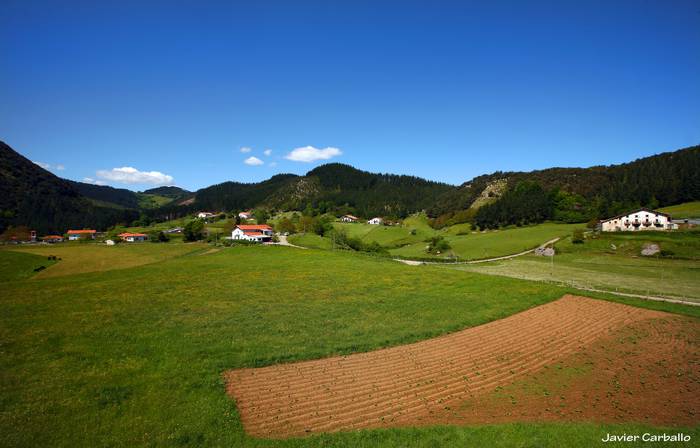
Olatz is a closed valley, a big surprise for anyone approaching from the coast to visit it. It is an enormous circular hollow of karstic origin surrounded by large pyramids of rock. Here, time seems to have come to a standstill. The pastures are bright green and scattered with traditional picturesque farms that make up a picture postcard of the Basque rural world. You can get to know the valley by connecting up the three information panels or by going on a guided tour of the Karst area, which will also enable you to enjoy a sampling session at a traditional cheese maker’s. A tempting experience to get to know the interior Geopark..
6.Lastur: the Geopark’s closed valley
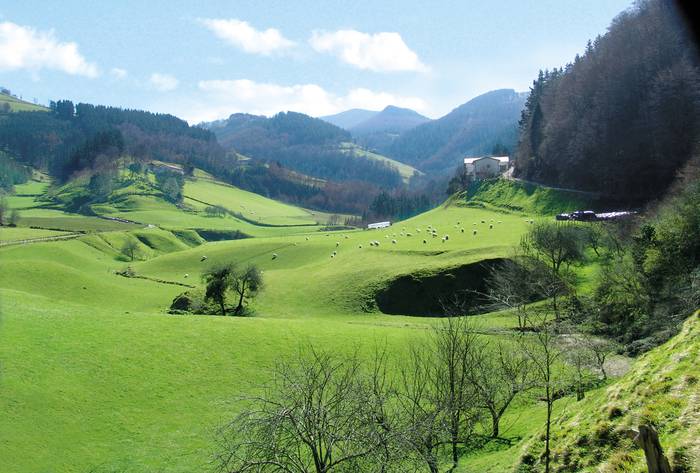
Lastur is a hidden valley, an elongated, deep slice in the interior of the Geopark. It is a closed valley in which the waters vanish underground through a series of large funnels or sinkholes. It is a dark valley with a rural tradition where the water has always set the tone since the 14th century when ironworks began to function; the Plazaola mills opposite the main square in Lastur can be visited. It is worthwhile doing a tour of the valley visiting its viewpoints and looking out onto the highest part to enjoy de Geopark’s highest peaks.